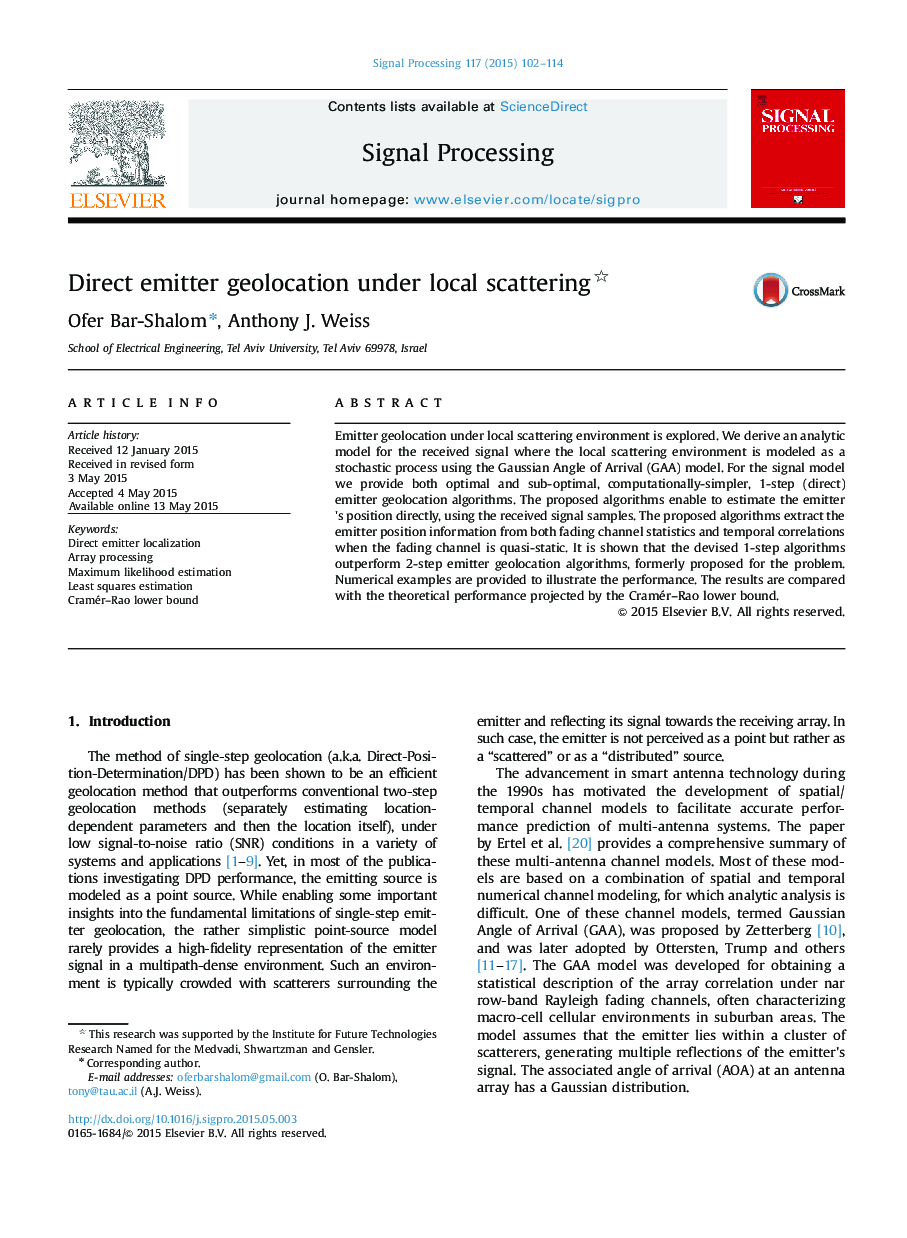| Article ID | Journal | Published Year | Pages | File Type |
|---|---|---|---|---|
| 562368 | Signal Processing | 2015 | 13 Pages |
•We formulate the signal model for geolocation of an emitting source in the presence of local scattering under quasi-static temporal Rayleigh fading, using multiple base-station antenna arrays.•We extend the GAA model covariance matrix derivation, originally developed for uniform-linear arrays (ULA), to arbitrary-shaped antenna arrays.•For this model we derive both optimal and computationally-simpler, sub-optimal, single-step (direct) geolocation algorithms for emitter geolocation. Based on both numerical performance and complexity analysis, we introduce the recommended algorithm for the problem.•In addition, we provide a detailed derivation of the Cramer Rao lower bound (CRLB) for the received signal model. Using numerical analysis of the CRLB expressions we highlight expected estimation accuracy under different temporal-fading and scattering conditions.
Emitter geolocation under local scattering environment is explored. We derive an analytic model for the received signal where the local scattering environment is modeled as a stochastic process using the Gaussian Angle of Arrival (GAA) model. For the signal model we provide both optimal and sub-optimal, computationally-simpler, 1-step (direct) emitter geolocation algorithms. The proposed algorithms enable to estimate the emitter ׳s position directly, using the received signal samples. The proposed algorithms extract the emitter position information from both fading channel statistics and temporal correlations when the fading channel is quasi-static. It is shown that the devised 1-step algorithms outperform 2-step emitter geolocation algorithms, formerly proposed for the problem. Numerical examples are provided to illustrate the performance. The results are compared with the theoretical performance projected by the Cramér–Rao lower bound.
